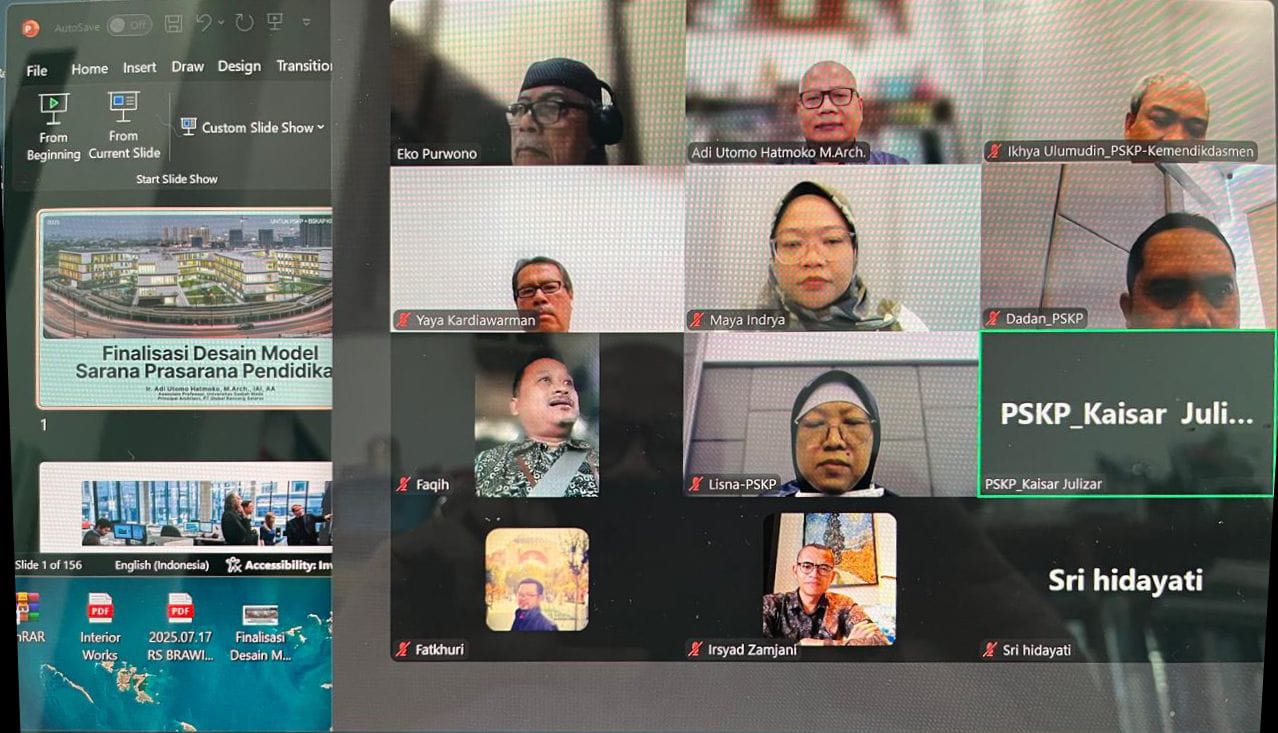A school should not only be a place for learning, but also a joyful and safe space that nurtures every child’s growth and potential. With the implementation of Indonesia’s 13-year compulsory education program, schools have truly become a second home for the nation’s children. Responding to this need, Kementerian Pendidikan Dasar dan Menengah, through Pusat Standar dan Kebijakan Pendidikan, has developed a new design model for educational facilities, an important step toward a more humane and higher-quality education system.
Ir. Ar. Adi Utomo Hatmoko, M.Arch., IAI., AA., an architect and lecturer at the Department of Architecture and Planning, Faculty of Engineering, Universitas Gadjah Mada, was the guest speaker at the Finalization of the Educational Facility Design Model event, organized by Badan Standar, Kurikulum, dan Asesmen Pendidikan (BSKAP), Kementerian Pendidikan Dasar dan Menengah, on Wednesday, August 6, 2025, via Zoom Meeting. On this occasion, Mr. Adi presented various key aspects of educational facility design.
His presentation began with an overview of school types and the core characteristics of each educational level. Naturally, each level has its own unique needs and complexity. He then elaborated on the master plan for educational facilities, which is generally divided into two groups: the Academic Development Plan (RPA) and the Physical Development Plan (RPF).
As an architect, Mr. Adi emphasized the importance of land use and building massing in school design. The criteria for school land and building composition were explained in a clear and comprehensive manner. He also presented a range of design configurations and building forms for different education levels.
The heart of school design lies in its space program. Mr. Adi discussed zoning principles and spatial layout, along with accessibility and safety considerations. He explained the standards and requirements for each room in detail, including the furniture needed for learning activities. In this session, he also shared case studies from various projects he and his team have worked on. His presentation sparked a productive discussion among participants, forming a strong reference for developing Indonesia’s educational facility design model.
As part of the national effort to improve education quality, this initiative aligns closely with several Sustainable Development Goals (SDGs), particularly SDG 4 on Quality Education, SDG 3 on Good Health and Well-being, and SDG 11 on Sustainable Cities and Communities. By designing schools that are safe, healthy, and inclusive for all, we are not just constructing buildings, but building a sustainable and equitable future for the next generation.
Reported by Rindi Dwi Cahyati


